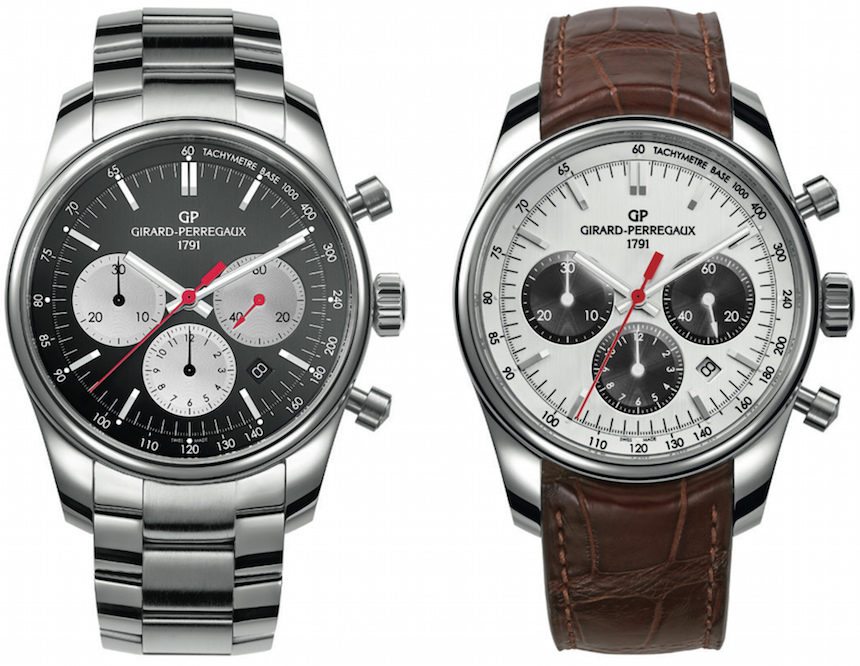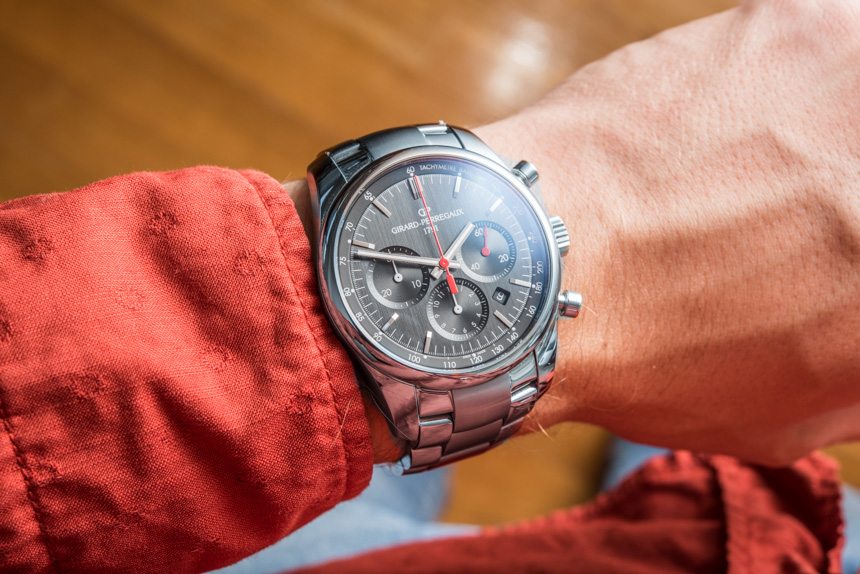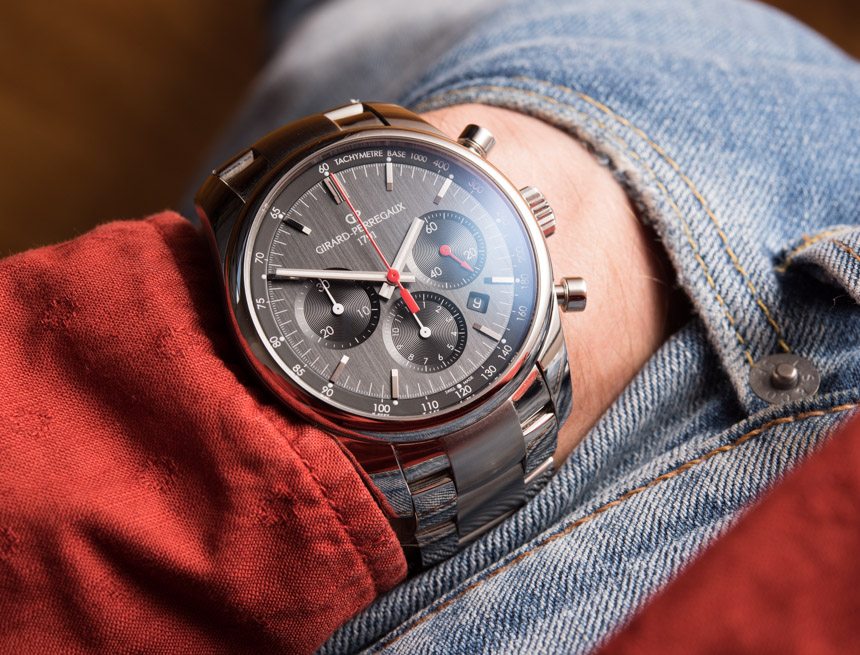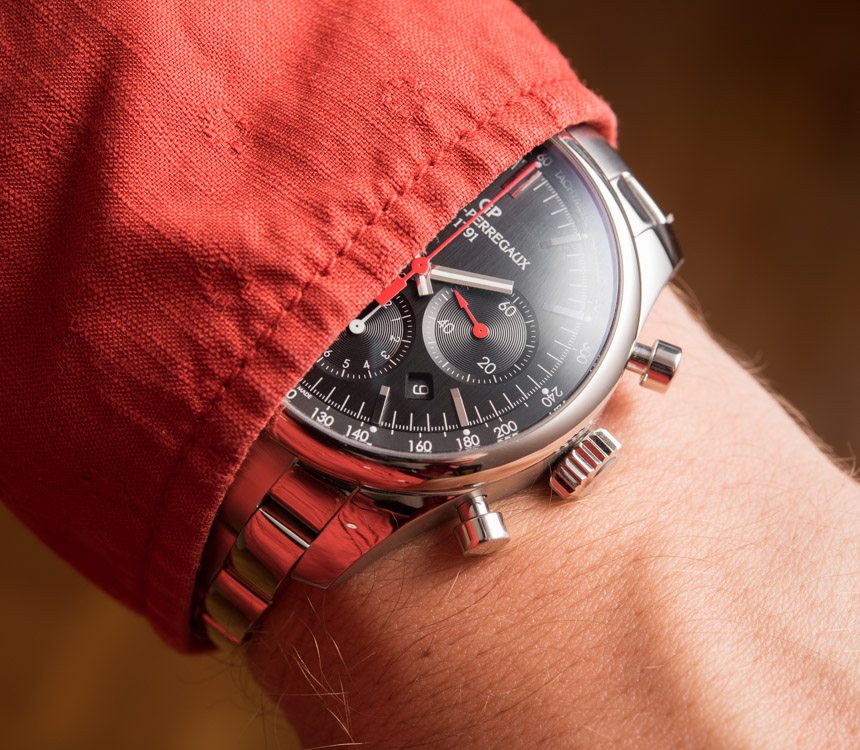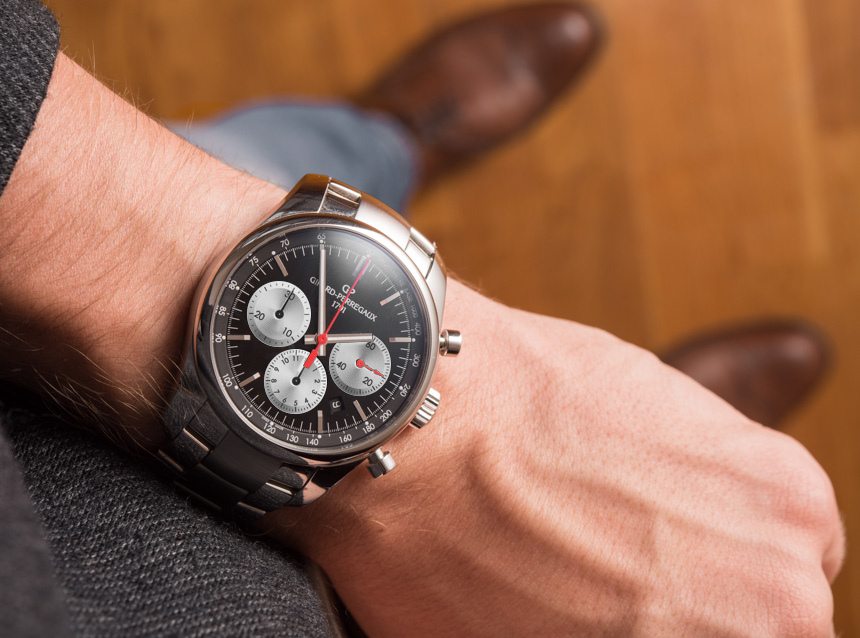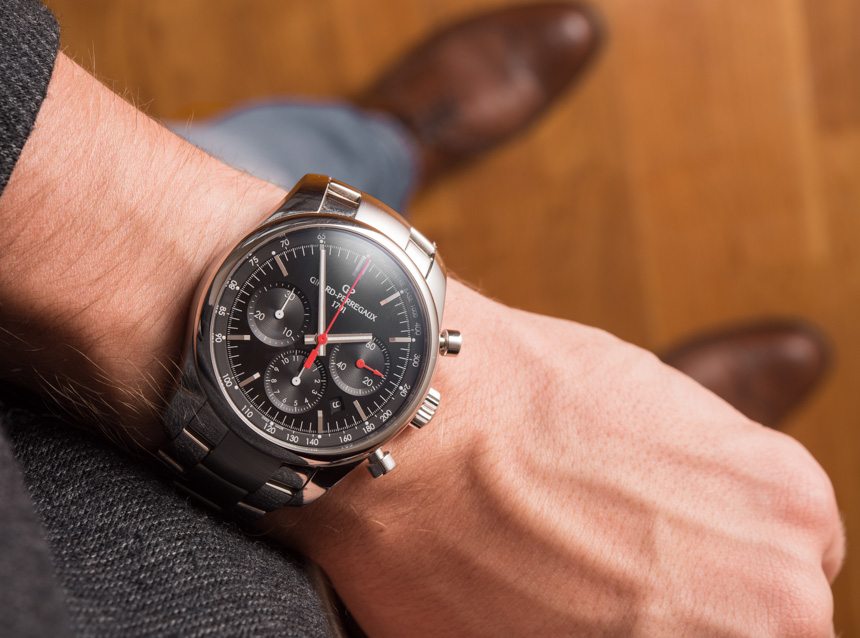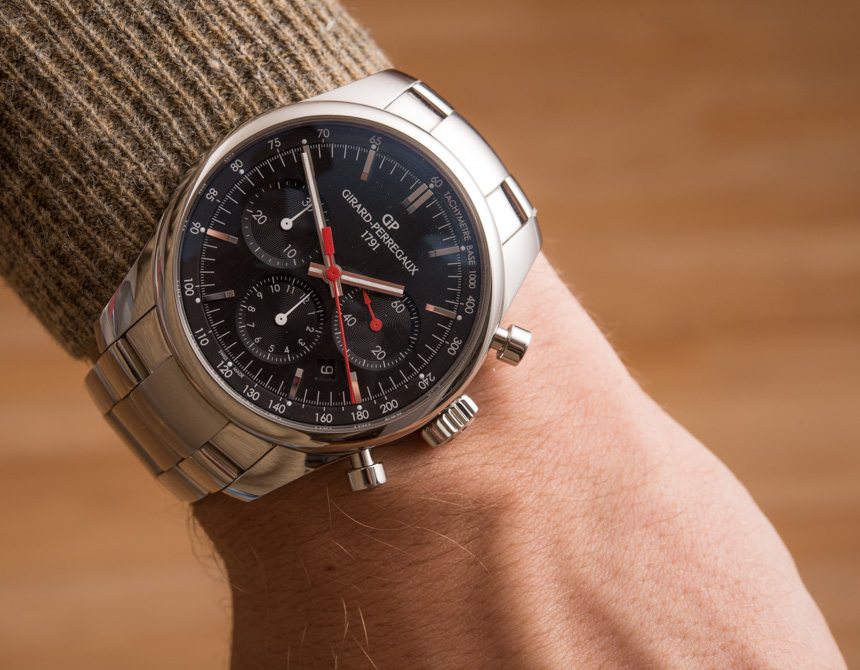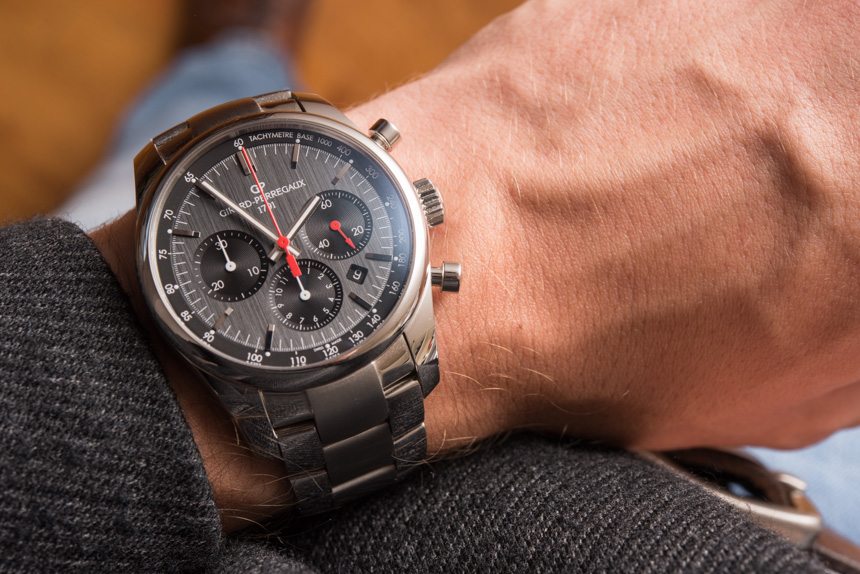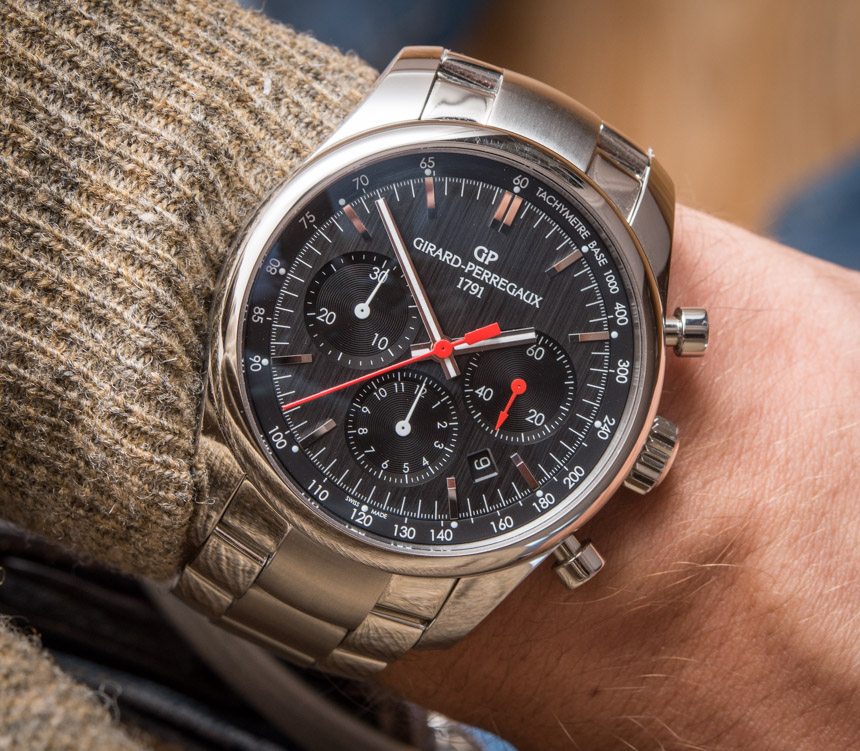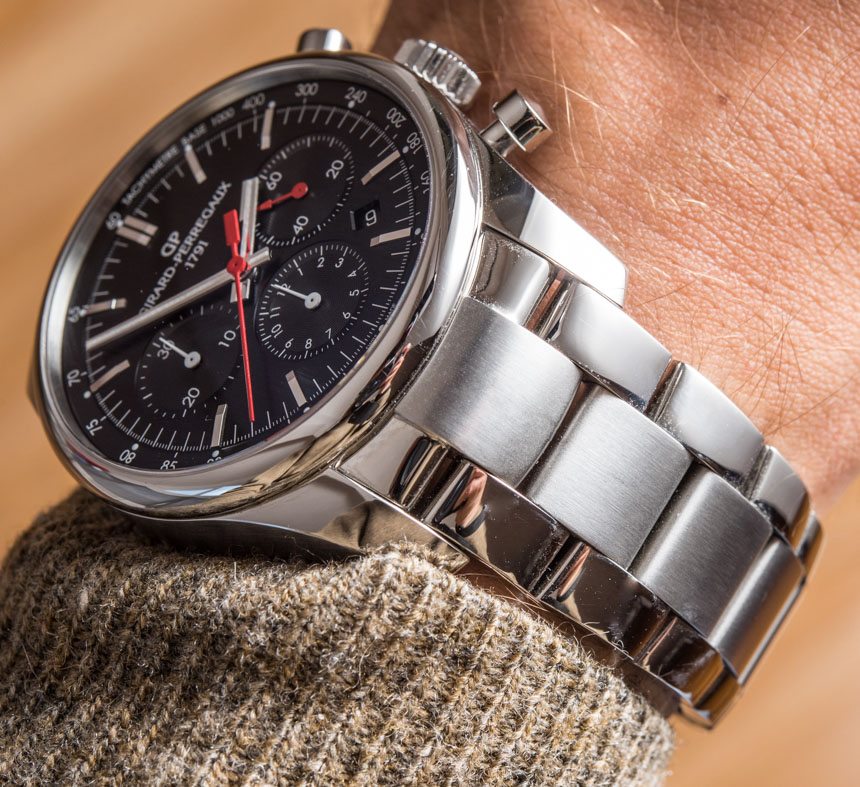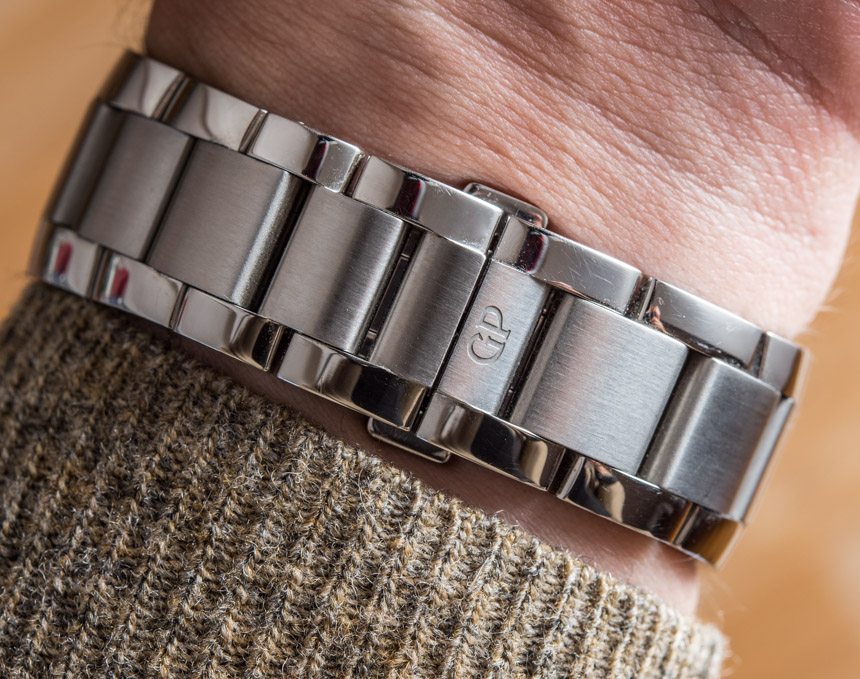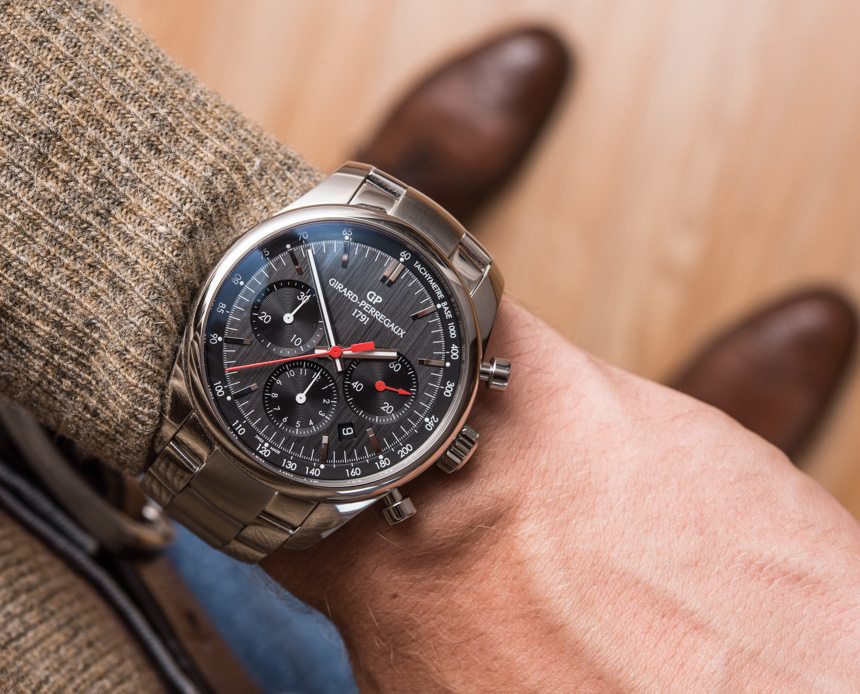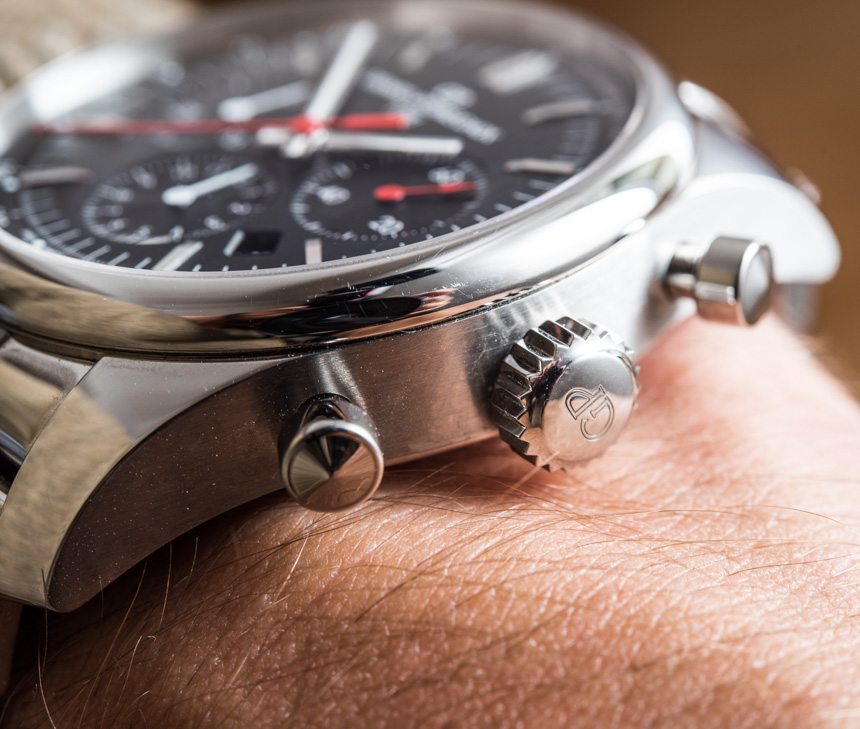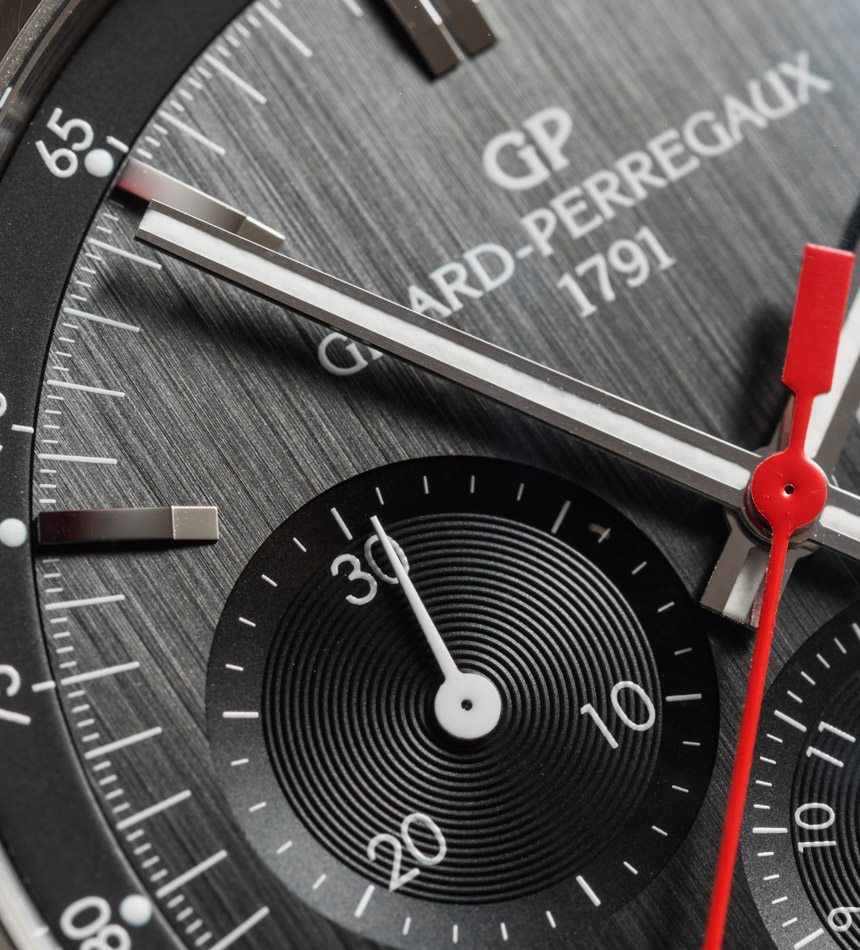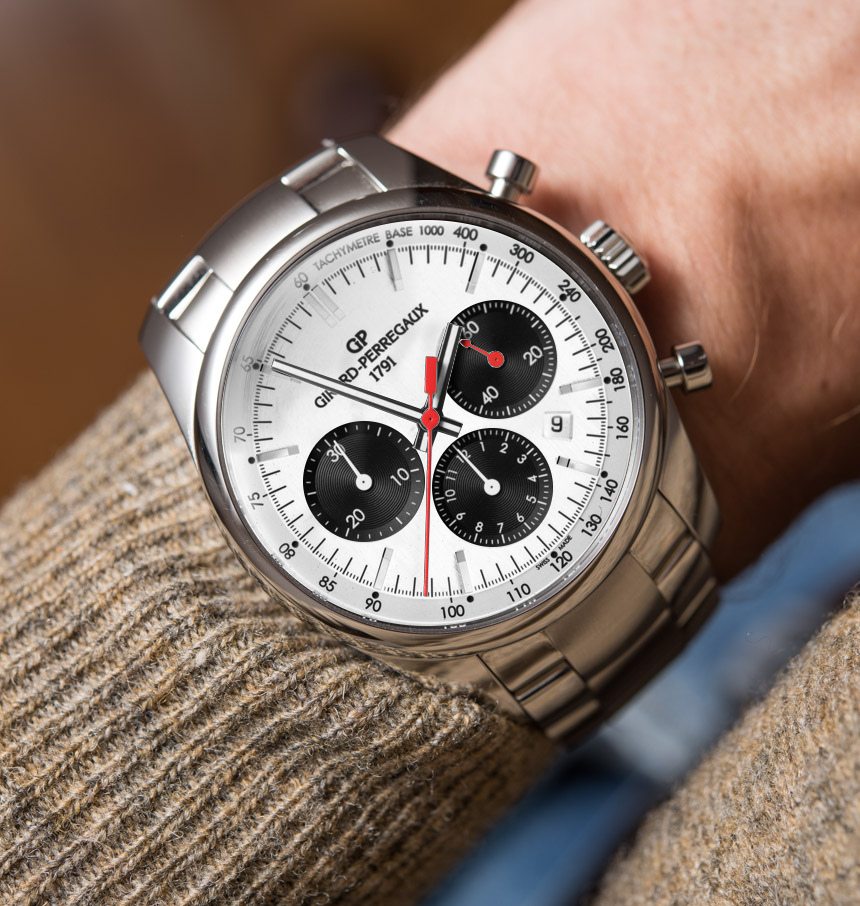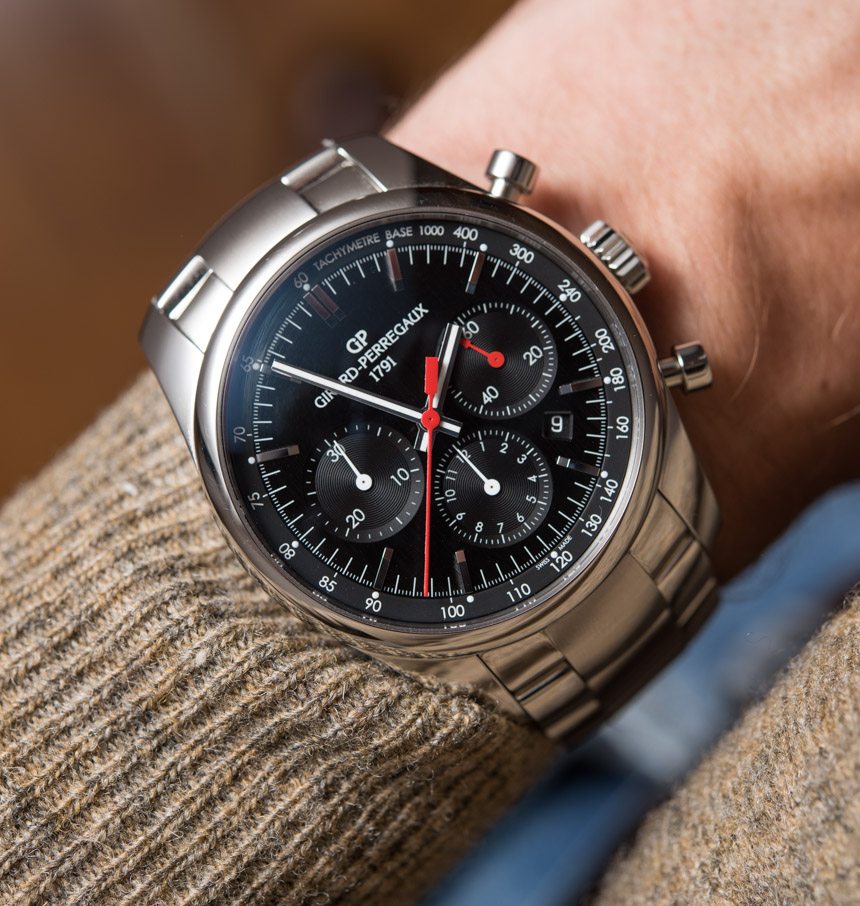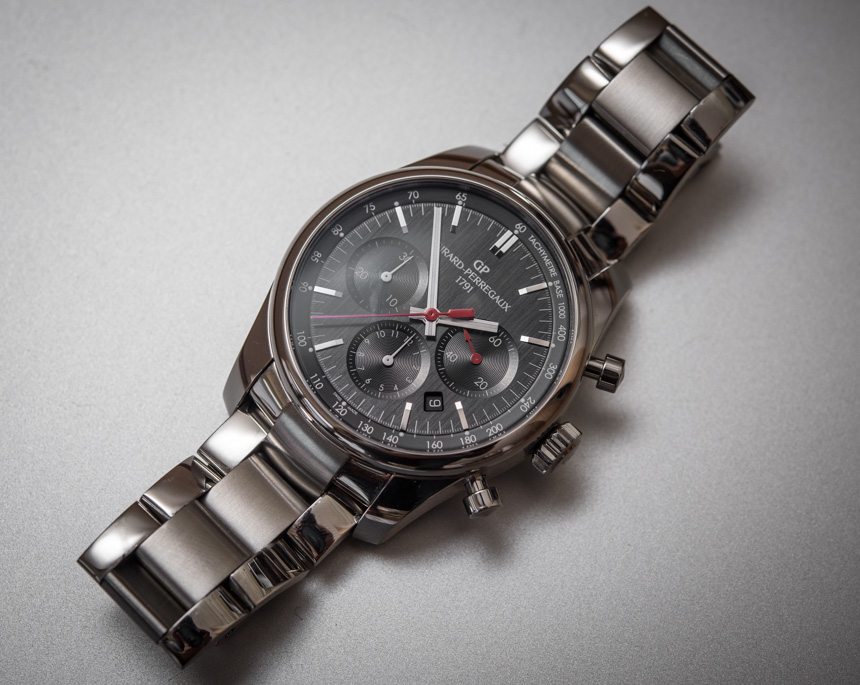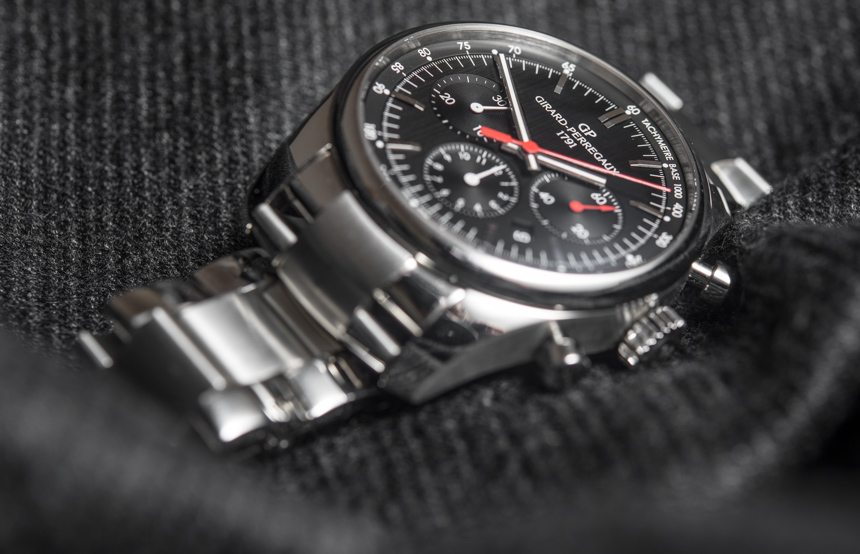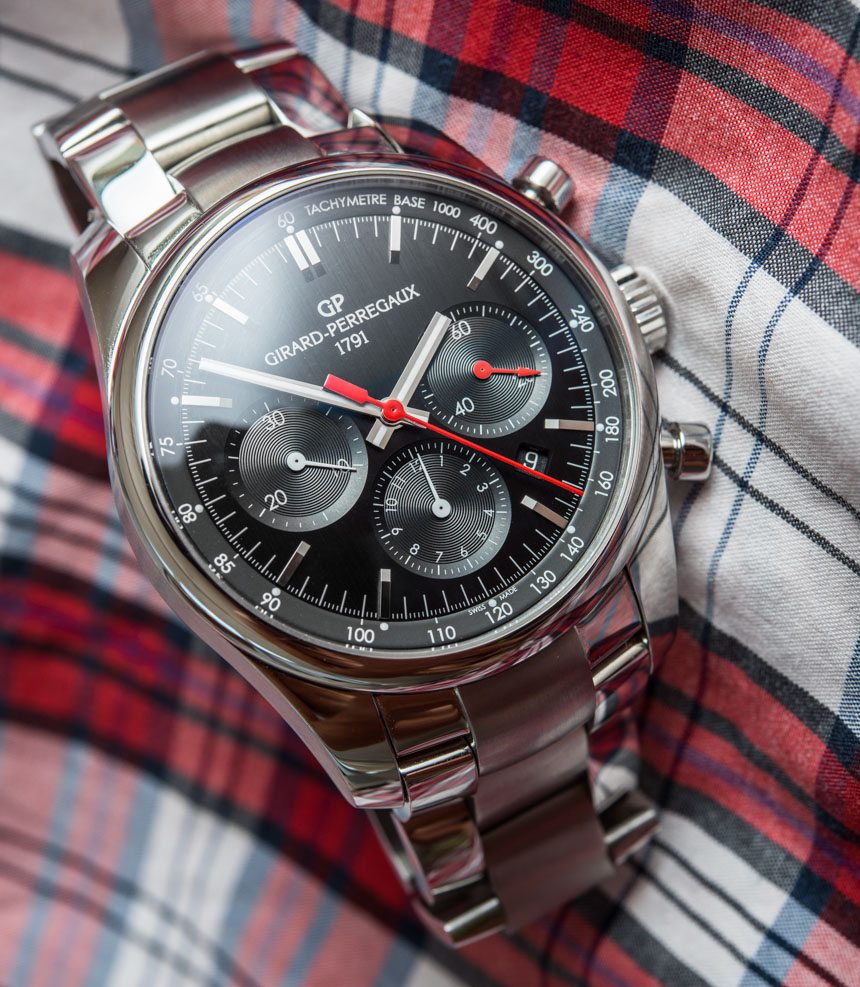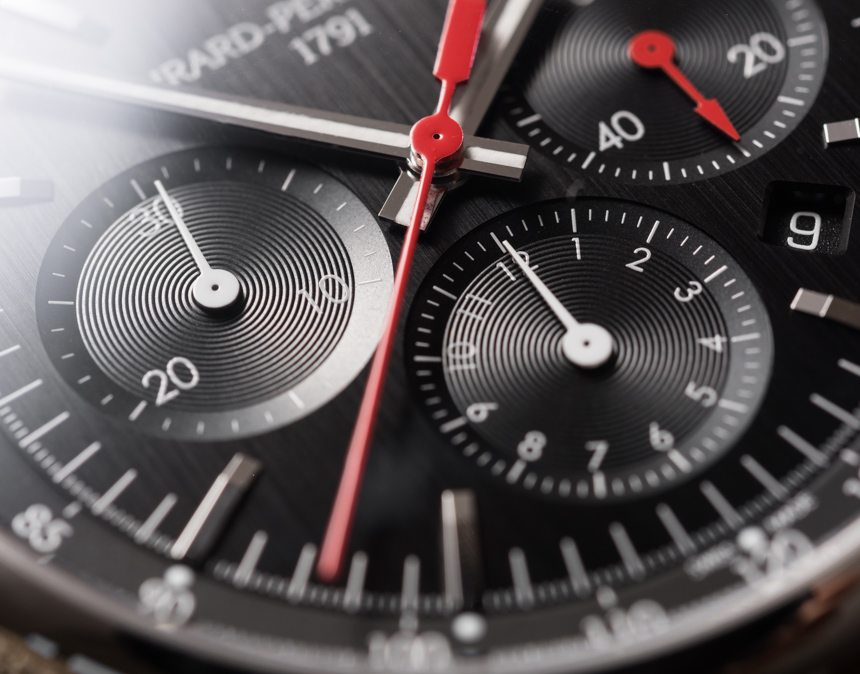
Legibility
This is always a tricky one with black dials, but GP has done a good job at avoiding nearly all of the pitfalls too often encountered by others. The baton-shaped, rectangular hands are long and wide enough, with the minute hand reaching its respective scale – little details such as this can make or break any watch design. The indices, as well as the hour and minute hands have polished edges, which work fantastically against the brushed, ever-so-slightly satin-finished (nearly matte) black backdrop of the dial. There is a bit of contrast in color, but this contrast between reflective and matte surfaces makes a world of a difference in enhancing legibility – and so the Girard-Perregaux Competizione Stradale Chronograph remains a treat to look at, thanks to those admittedly vintage-inspired, polished baton hands and thin, lumed centers.
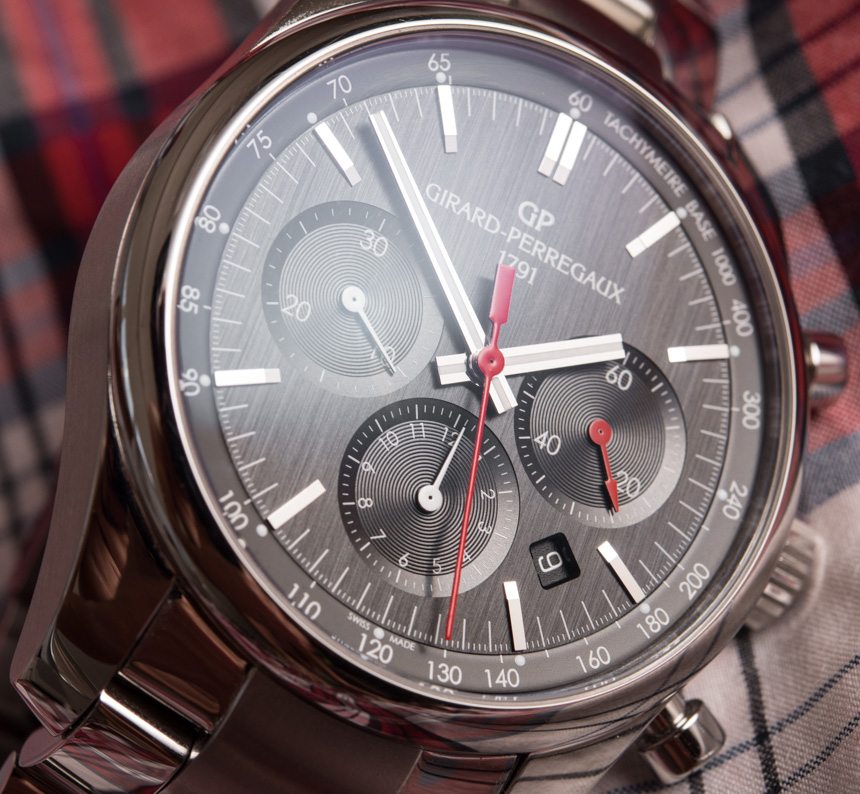
One anomaly of the dial design concerns the chronograph hands (watch nerd alert going off right now): the central seconds for the chronograph is in a saturated and indeed very sporty red, an obvious and most welcome choice. However, as a tradition in intelligent watch design, the chronograph seconds hand’s color is usually matched by the chronograph sub-dial hand(s) – meaning that in this case the 12-hour counter at 6 and the 30-minute counter at 9 should have matching red hands. What happened instead is that those show up in white and the hand indicating the running seconds on the 3 o’clock sub-dial is what has been painted red… Yes, both seconds hands in red, and I think I can see the connection there, but it still is a rather unusual and less of a sensible design element.
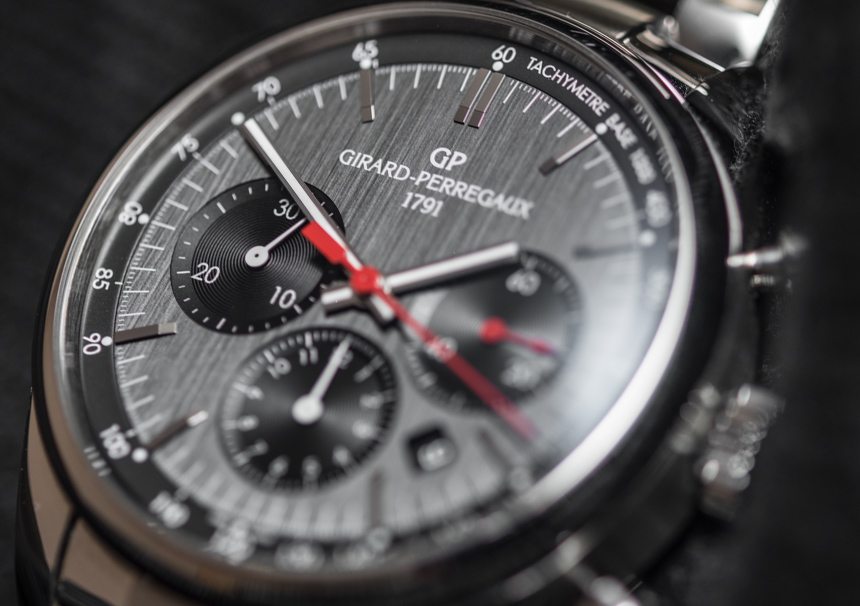
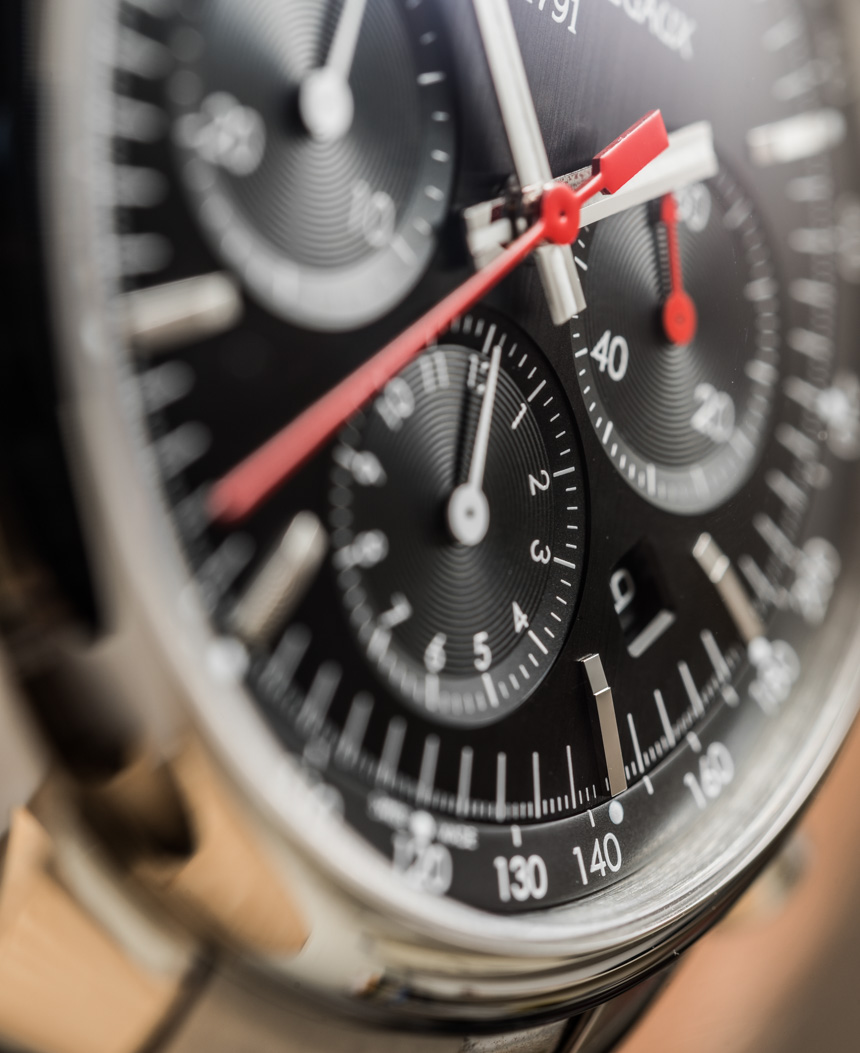
The date is set at the 4:30 position on the dial with white on black text, blending in nicely to the dial. Computer rendered images can show a rather distorted view and often fail at reproducing what a watch actually looks like in the metal. In other words: the date there when you need it, but blending perfectly into the dial when you don’t. Speaking of insignificant but seemingly indispensable dial elements, there is a subtle tachymeter scale printed on the edge of the dial – a must-have for most all classical chronographs.
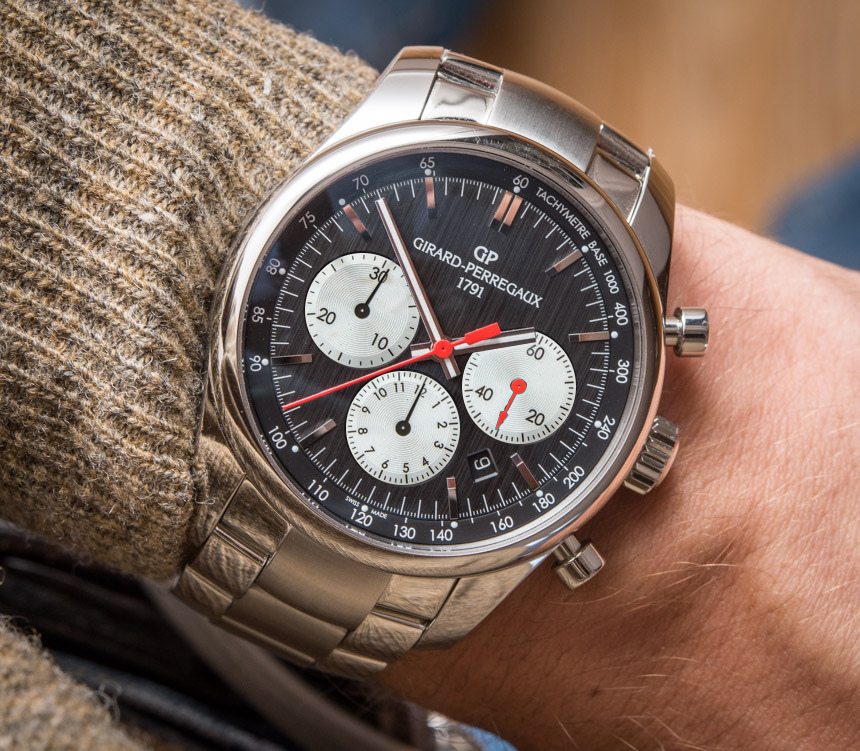
One thing that has occupied my mind a lot of the time while wearing the Girard-Perregaux Competizione Stradale Chronograph was how the all-black and all-white dial options highlight what I consider to be a missed opportunity: a nice panda dial version. My lowly photoshop skills hardly do it justice, but even with the all-black one on the wrist, my mind’s eye can see how this could be such a “killer piece” in this dial layout. On another personal note, I’ll say that it was rather difficult to pick either the white or black dial reference to review – black is more classical while white is on the sportier side… but at a time when Panda chronographs are selling for six- and seven-figure prices, and there is an obvious shortage of nice, classically styled chronographs with panda dials from major brands, I can’t help but feel that the Girard-Perregaux Competizione Stradale would have gotten more attention if it were available in a black-white dial.
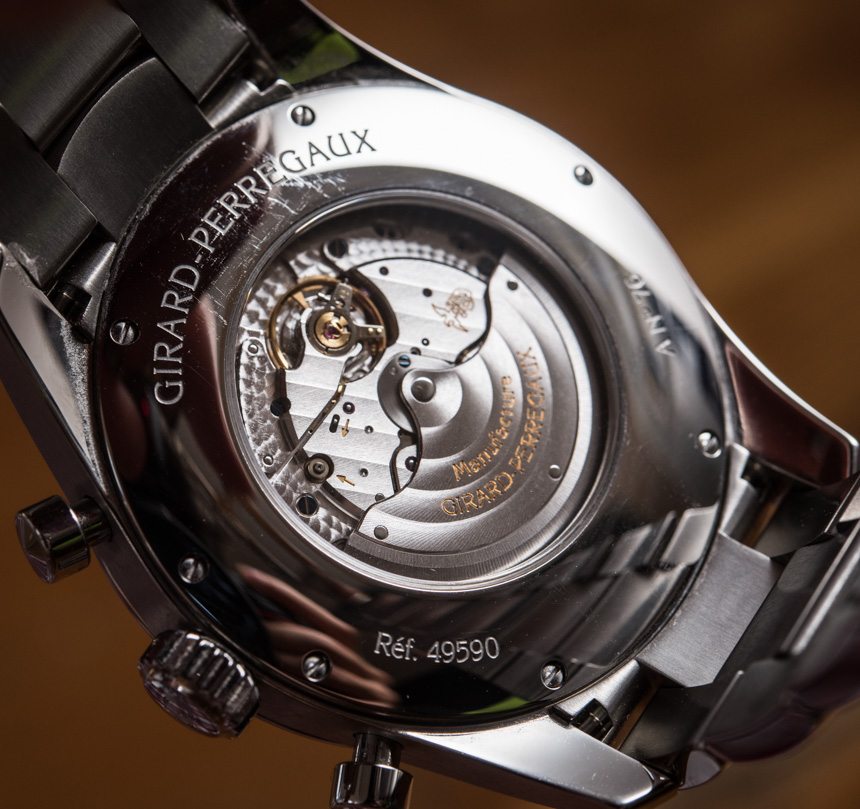
The Movement
An in-house chronograph from Girard-Perregaux – a utterance more than enough to get any dedicated watch enthusiast drooling… Still, although that is technically accurate, there are a few things to consider about the movement. The Girard-Perregaux Competizione Stradale Chronograph is powered by the GP03300-0122 automatic chronograph movement, which is based on GP’s 3300 in-house-made, ultra-thin, automatic caliber. This 3300 base is what we saw in all of the brand’s more recent releases, including the new-for-2016 Laureato, Gyromatic, and the Vintage 1945.
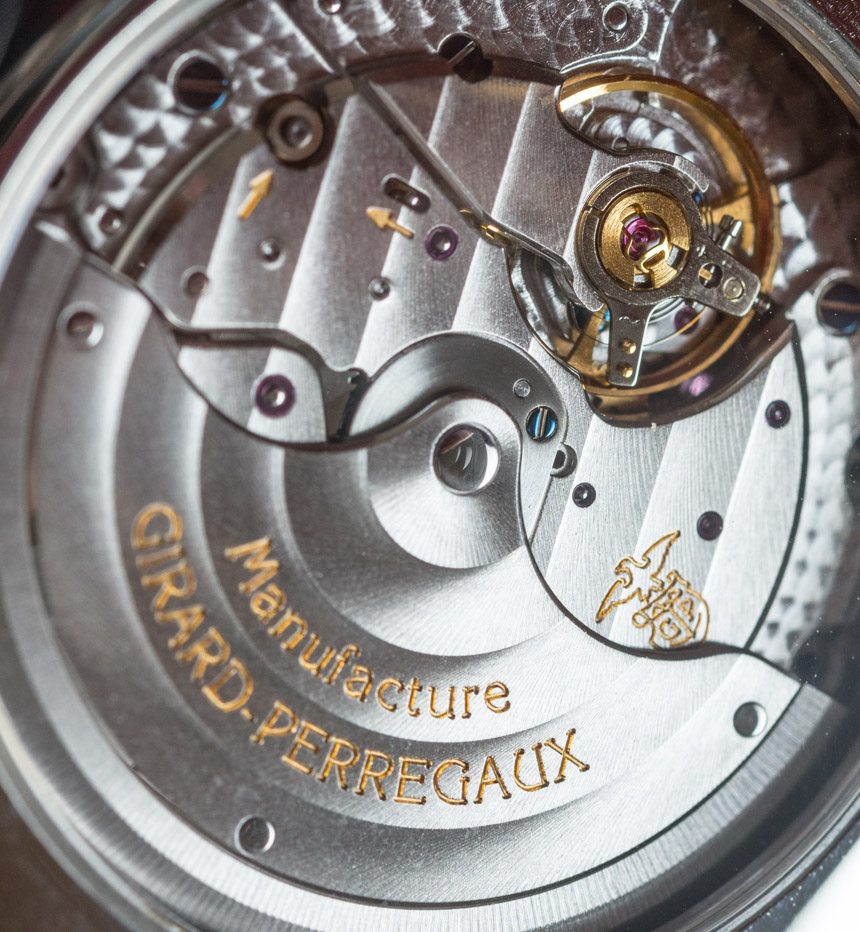
Girard-Perregaux has designed the GP 3300 caliber to be easily modified by adding different modules to it. The thinness of the GP 3300, coming in at just 3.28 millimeters thick, allows the manufacture to fit modules to its dial side and still end up with a manageably thin caliber overall, and that holds true for the Competizione Stradale. Despite its domed crystal and curved lugs, this chronograph comes in at a totally acceptable 13.75 millimeters thick – and I have a feeling that if they really wanted to, they could have shaved a few more millimeters off it, since the chronograph movement with the module and automatic winding came in at 6.50 millimeters thick.
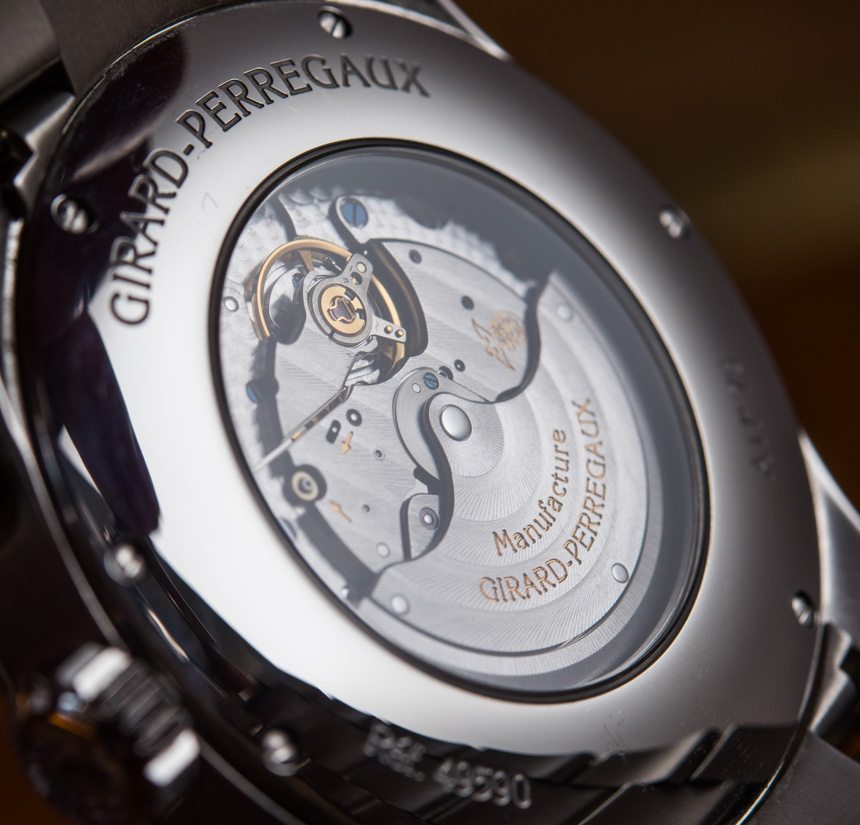
The module on top of the GP 3300 is unlikely to be in-house produced – Girard-Perregaux has been using high-quality chronograph modules from Dubois-Depraz for a long time now. That’s nothing to sneeze at, either – DD produces some very fine modules, including the ones still used to power the Audemars Piguet Royal Oak Offshore Diver Chronograph, for example.
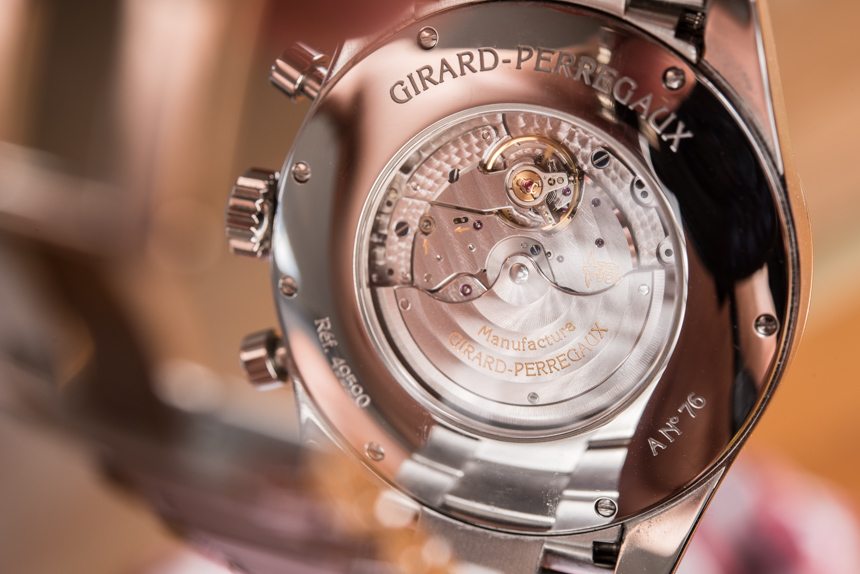
This specific GP03300-0122 movement runs at a 4-Hertz frequency with an autonomy of 46 hours, and has a relatively high component count of 435 parts with 63 jewels. The movement is revealed through a modestly sized sapphire crystal case back – GP does not do much to make the relatively small movement appear larger than it is. The thick steel frame around the crystal does make the movement look small-ish in the case, but once you get past that, you’ll find the GP 3300 to be decently finished. Nothing particular to write home about, just the usual solid job at high-quality movement decoration with a Côtes de Genève, some beveled and polished edges, blued screws and perlage. It does not beat seeing the chronograph’s mechanism at work (which remains hidden on the dial side of the movement), but it’s nice enough to be shown off through the see-through back.
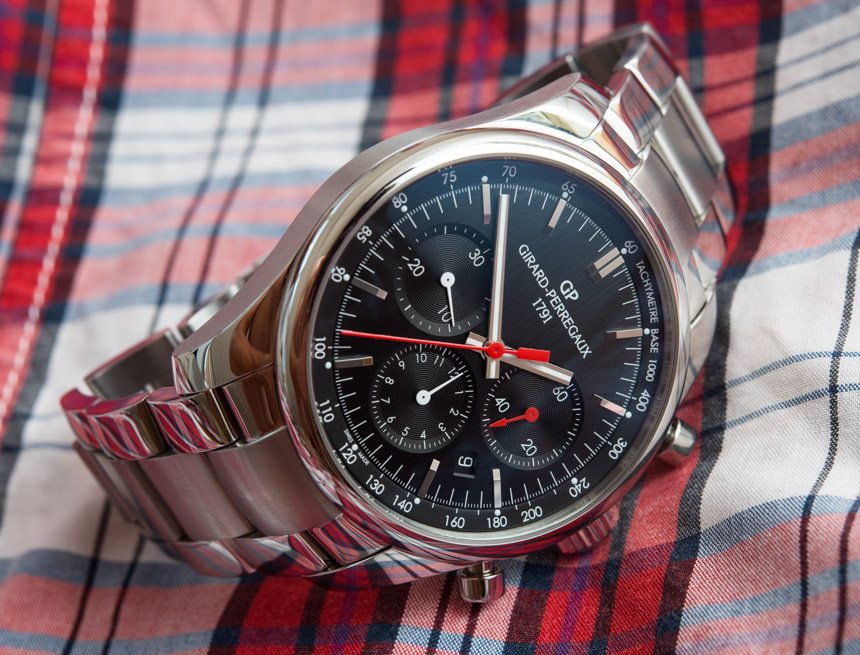
Summary
The Girard-Perregaux Competizione Stradale goes to show that you need not try and revolutionize watch design to create something noteworthy (and watch-money worthy). It is a classically styled, comfortable-to-wear chronograph that I imagine many will be as happy to wear today as 5, 25, or 50 years from now. A solid base movement and quality module ensure serviceability, a fantastic dial and case combination ensure lasting the test of swiftly changing design trends, and a solid bracelet makes for comfortable wear in every situation… Save for in any type of water deeper than your glass of still Pellegrino, or what have you.
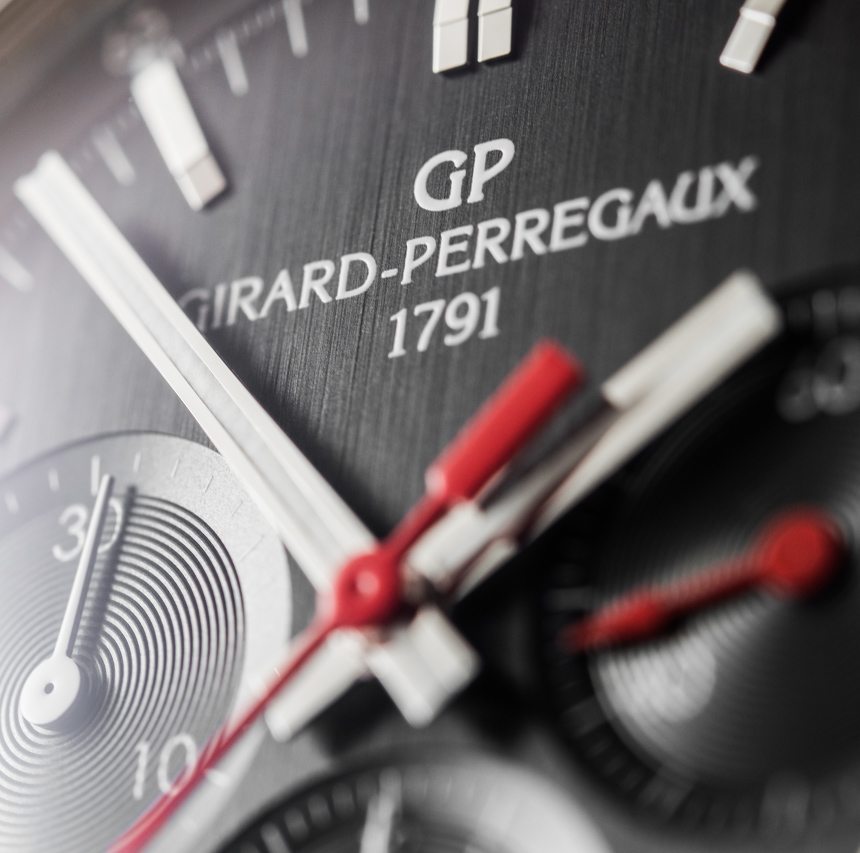
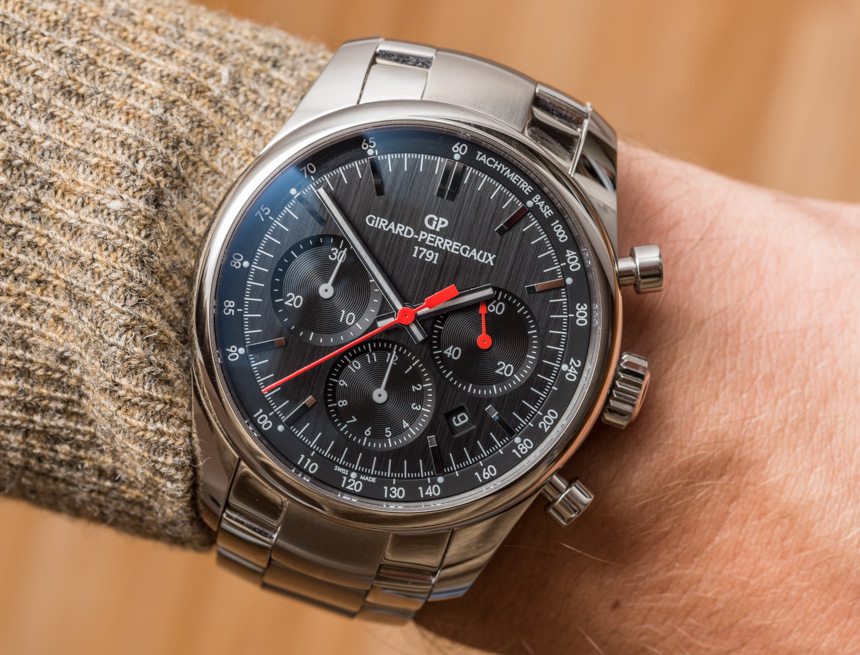
While GP has gotten most of the important details right once again, the brand continues to struggle with an issue that concerns the utmost majority of luxury watch brands today: resale value and considerable grey market discounting. I am optimistically (hopefully you’ll agree that not naively) looking forward to a time where brands will figure out a way to sell direct to consumers, which in turn will allow them to eliminate heavy discounting and consequently to reduce MSRP.
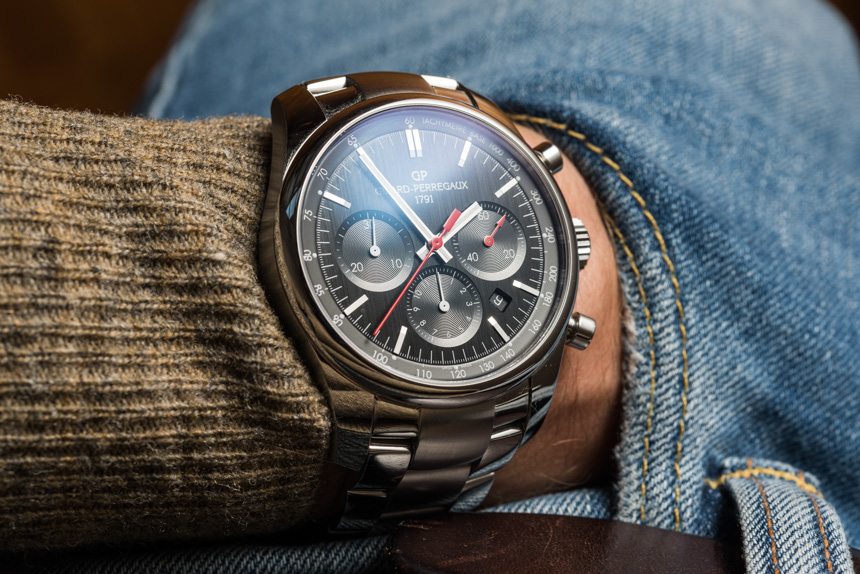
Priced at a few thousand less, the Girard-Perregaux Competizione Stradale could have made a huge splash. As it is now, however, it finds itself in the highly competitive market segment of luxury chronographs priced right at around the $10k mark, forcing some prospective buyers to either make a tough decision, or pick the Stradale up on the grey market. Price for the Girard-Perregaux Competizione Stradale Chronograph is $9,800 on the strap and $10,500 on the bracelet. With all that noted, I can still only imagine it finding its way onto the wrists of many happy watch wearers – it’s just how much they will get it for that remains an issue for the brand (and the industry) to resolve. girard-perregaux.com
Necessary Data
>Brand: Girard-Perregaux
>Model: Competizione Stradale
>Price: $9,800 on strap, $10,800 on bracelet
>Size: 42mm wide
>Would reviewer personally wear it: Yes.
>Friend we’d recommend it to first: People looking for a solid daily wearer that will never get out of style. In the metal, this does have a perfect “Dad’s watch” vibe to it – and that always is a good thing.
>Best characteristic of watch: Timeless look that works in pretty much any setting.
>Worst characteristic of watch: Wish one of the two dial options was a bit more interesting. Can’t change bracelet to strap. 30 meter water resistance with screw-down crown is a weird combination.

